

The Evil Within has been advertised as the return of the beloved eerie titles of the 2000s, much to the delight of horror fans. Director Shinji Mikami, the creator of Resident Evil, wanted to return the survival horror genre to its frightening roots instead of it being all about action this time around. Read on to see if The Evil Within lives up to this audacious claim.
[CONTENT WARNING: The Evil Within is rated Mature and contains pervasive gruesome violence. This review contains clips of gameplay and therefore reader discretion is strongly advised.
You control Sebastian Castellanos, a police detective who is sent with his partners to investigate a mass murder at a mental hospital. Before long, the situation escalates when a visitor that seems to be from another dimension shows up and mows down the police. Having no time to react after seeing this, Sebastian is overtaken by the being and left to die by nasty creatures.
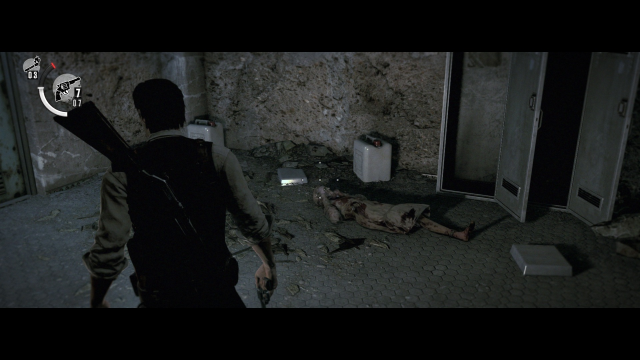
Once you escape, things don’t improve much; the ambulance that you leave in doesn’t reach its destination due to complications and you’re left abandoned in the woods. At this point, the first chapter ends, so no more of the story will be detailed here.

The Evil Within leaves you with a lot of questions that don’t seem to be answered. A little more than halfway through the game, you’ll begin to understand what’s going on, but up until that point, events will seem very random and all over the place. For example, you might be running away from an enemy and as soon as you reach a door, you’re suddenly in a new area. The game reveals how this happens to you over time, but those looking for a coherent story may feel frustrated early on.
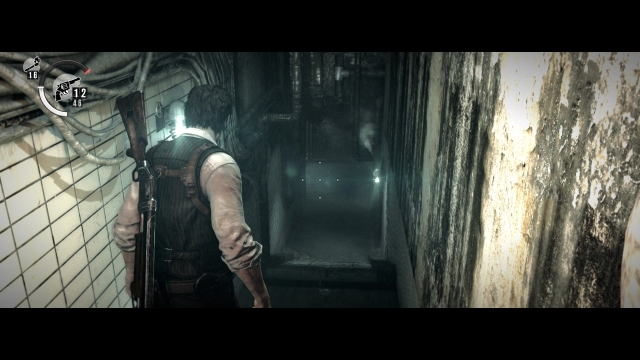
Once you complete the game, you’ll be able to view little figurines of every character in the game with some info about each. This actually shed more light on some of my “Why?” questions than the ending did, so be sure to check those out when the game is done. The ending brings some closure, but it’s still vague overall. You’ll be left with all sorts of quandaries; reading theories on game forums will prove interesting with this one.
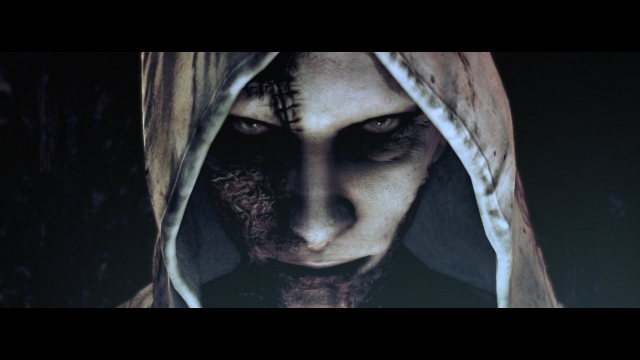
Survival Horror is all about trying to make your way through a terrifying world with limited ammo and resources, all while enemies seem to outnumber you and you’re on the edge of your seat due to fear. The Evil Within does a decent job at creating this environment.
The environments are fairly typical of horror games: churches, sewers, hospitals, and underground tunnels are all present. You’ll be outside for some segments, including on a mountain and in a decrepit city, but most of your time is spent in the dark. Thankfully, you possess a lantern that can be turned on at any time with no limits, though it does make your presence more known to enemies.

At the start, you have two difficulty choices: Casual and Survival. Casual adds auto-aim and provides more ammo, according to the game. From what I’ve read, there may be fewer puzzles in Casual as well, but this isn’t specified anywhere in-game. If you complete the game on Survival, you’ll unlock Nightmare and Akumu difficulties. Akumu is the hardest the game has to offer; death occurs in a single hit from any type of hazard, so if you don’t get your kicks from crazy-hard games, stay away.
I played Casual for review purposes, and it was fairly easy. There were only a few times when ammo was completely depleted, and I never felt overwhelmed. Unless you’re brand-new to video games or only care about the story, play Survival your first time. You’ll experience some deaths, sure, but that’s half the fun.
The controls aren’t a problem. While you can only flip the triggers or move the inventory from R3 to the PS4 touchpad (which I recommend, since the touchpad isn’t used for anything else), you won’t miss the customization since everything works well. The four directional buttons are used as a quick-switch menu, and opening the inventory slows time down. This allows you to do what you need to without totally taking you out of the situation, which is a nice touch.
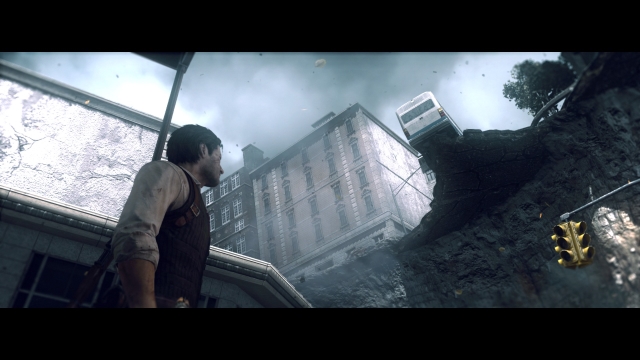
While the game is linear, as most survival horrors are, you can customize your playing style to a point. The game doesn’t require you to kill every enemy in sight most of the time, so if you prefer to sneak past foes instead of taking them down, the option is there. Tips on the loading screen give slightly biased advice; it’s evident that the game doesn’t want you to rely on melee attacks, as it reminds you that they should be used primarily for defense and barely cause any damage. Headshots are important; even more so in higher difficulties when ammo is scarce.
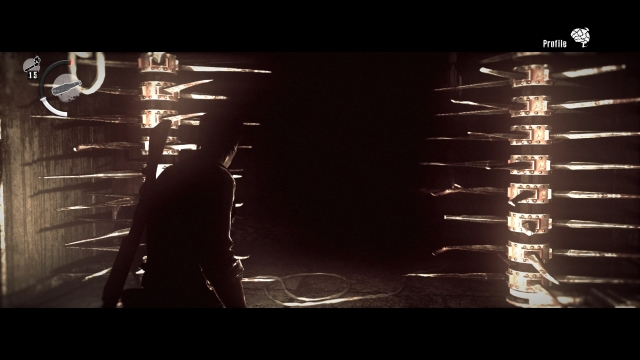
You’re given the opportunity to stealthily take down foes from behind, and in the first few chapters this is quite useful. In certain parts, however, stealth wasn’t feasible due to traps or terrain that left you at a disadvantage. Perhaps it was just my play style, but I found myself fighting more enemies than I left alone, which is odd for a horror game.
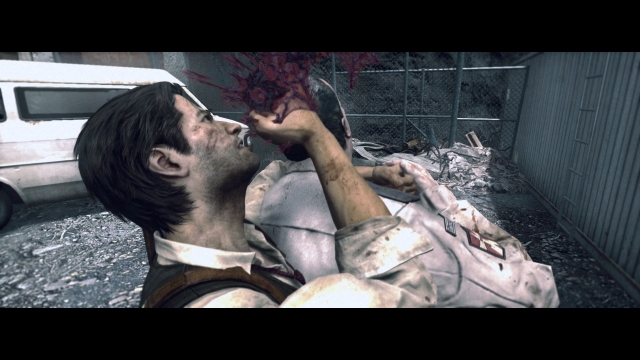
A few times in each chapter, you’ll come across a room with a mirror and music playing. Gazing into the mirror warps you into the hospital, which serves as a sort of hub for the game. From here, you can save, use keys you’ve found to open lockers containing supplies, or utilize the RPG-esque upgrade system that The Evil Within, like many recent games, features.
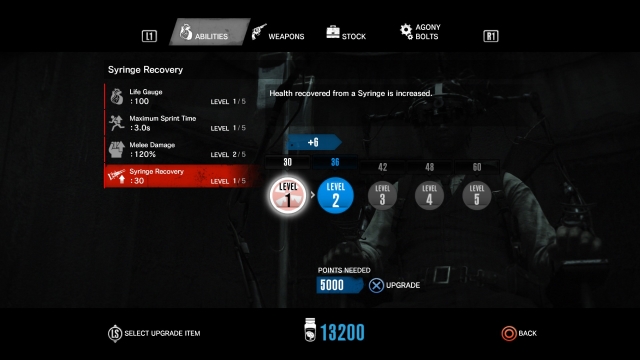
Green gel is acquired as a reward for killing enemies or can be found in various crannies. A chair in the hospital lets you enhance abilities like maximum health, sprint time, ammo capacity, or various weapon upgrades like shorter reload times. This reinforces the “choose your style” gameplay, so if you’re constantly fighting you may want to upgrade your trusty pistol, while someone more fearful would favor sprint time and health.
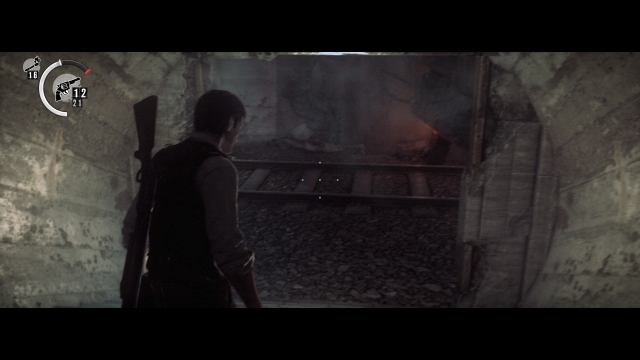
The combat is satisfying. Bosses take a lot of damage, so when you’re facing them, they feel like more powerful opponents. The variety of death animations assures you’ll be sickened in a new way each time you fail; if I didn’t say it already, this game is gruesome. The squeamish need not apply.

A partner is with you for a small part of the game. Thankfully, he isn’t too strong nor too stupid. He’ll kill enemies and will never be the reason you die, but you can’t just hide behind him and sit back while he does all the work. This could have been a huge drag, but they balanced it well.
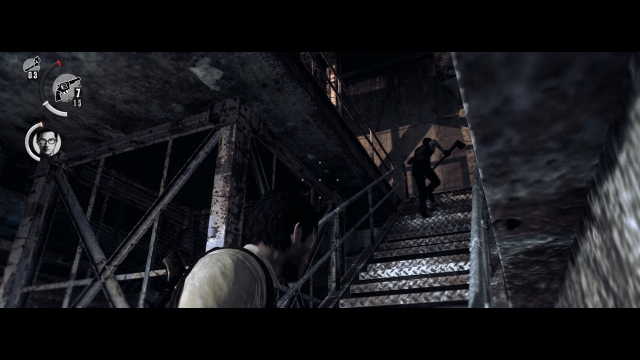
The Evil Within’s most obvious technical problem is the graphical pop-in. If you’re not familiar with this term, it refers to game graphics not loading before you see them, so the object looks one way and then transforms while you see it. The issue isn’t widespread and is mainly noticeable during cutscenes, but there’s not excuse for this on a powerful current-gen console. Other than that, performance is excellent. I had one brief, big slowdown, but it was an isolated incident.
If you watched the gameplay video at the beginning of this review, you’ve surely noticed the black bars at the top and bottom of the screen. This is on purpose, and there’s no option to change it. While movies have to be presented in letterbox form to show the entire picture that was filmed, a video game can be displayed however its creator desires and so the decision to use this viewpoint is odd.
The player doesn’t gain much from this, and sometimes it seems like you have to constantly wiggle the control stick around to get a view of what’s around since you don’t have a full screen. You’ll certainly get used to it after a while, but it’s distracting enough that every time I sat down to play the game I noticed it.
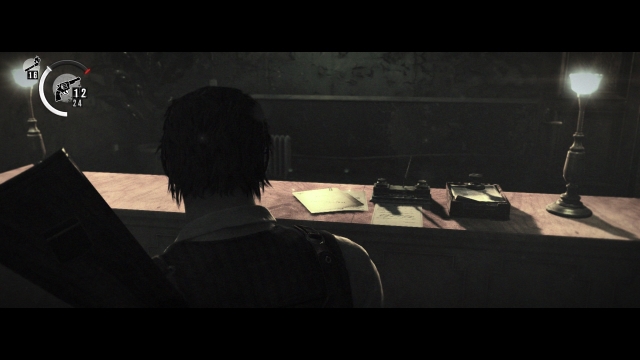
Checkpoints are given out generously, which ensures you’re able to progress steadily. However, there are a few instances where checkpoints are placed in a position which requires you to replay the same parts over. Thankfully this isn’t often, but when it does happen you’ll be upset about pulling the same switches multiple times.
The game has a generally unsettling atmosphere, but it never gets too scary. It’s not tame, however: In the intro, you’ll be sliding down a tunnel that’s covered with blood and bodies while dodging blades, and later trying to stay away from one of the scariest foes while you’re slowly being poisoned by gas. It’s intense. Apart from occasionally running into trap wires and setting off bombs, however, I wasn’t exactly jumping out of my seat. Compared to a game like Outlast that has you shaking in fear due to unforeseen creepy events, this game is a bit light on the scare elements.
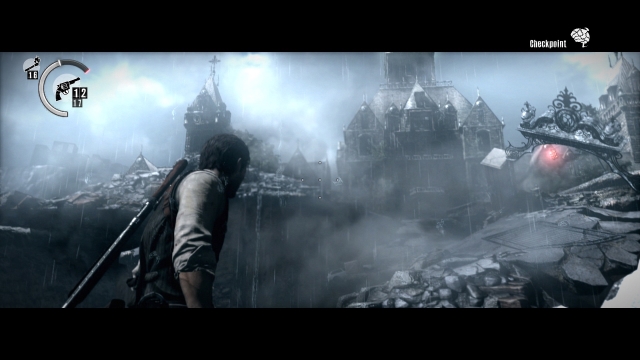
The Evil Within can be completed in around 15-20 hours. The game’s 15 chapters don’t contain a lot of room for wandering, though it is important to explore small spaces for ammo and green gel. If you’re someone who never goes back to a game after you finish it, you won’t find much to enjoy after the credits roll. Beating the game unlocks a couple of new weapons, New Game Plus, and additional difficulties as mentioned above. A wave-based survival mode would have been a cool addition, but it’s not here.
If you’re a completionist or enjoy playing the same game over with different restrictions, however, you’ll have reason to play the story again. The game’s trophies include some true challenges, including beating the entire game without any green gel upgrades and beating the adventure in under five hours, not to mention the punishing Akumu difficulty. Again, for those who don’t want to play through the same thing more than once, you’ll be ready for something else.
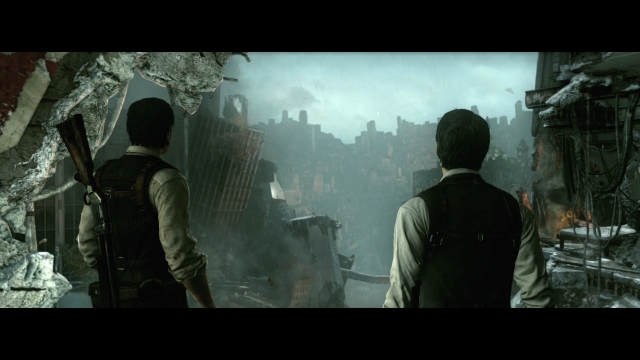
Three DLC packs are planned. Two of them will explore the story of one of Sebastian’s partners, while the other will allow you to play as The Keeper, one of the most terrifying enemies. A Season Pass is available now for $20; hopefully these expansions will shed some more light on the story.
So, all of this being considered, should you play this game?
If you’re a horror fan, this is definitely a game you need to play. However, the game is, frankly, not worth $60 for the content you get. 15 hours is pretty short for a game nowadays, and the lack of any post-game content aside from replaying it is a bit skimpy. Therefore, my final recommendation for this game is to:
Wait until it goes on sale or is bundled with its DLC.
Despite some graphical issues, an odd design choice in the letterbox format, a vague story, and a lack of replayability, The Evil Within is a quality game that should be experienced by any mature gamer. You won’t completely understand the story at the end, but the time you spend with the game will be enjoyable. For now, get a different game that will hold your interest for a longer time; The Evil Within simply doesn’t offer a good value at this point.
Check out our review of Borderlands: The Pre-Sequel, which released the same day as the Evil Within, if you need another game for now. Or, if you’re looking for more horror check out lesser-known PS2 titles that will scare your pants off.
Will you be playing The Evil Within? What are your favorite horror games? Let us know in the comments!
The Evil Within is available on PS3, PS4, Xbox 360, Xbox One, and PC for $60. It released on October 14, 2014.




 Which Super Ability is the Best in Destiny? - Titan & Warlock
Which Super Ability is the Best in Destiny? - Titan & Warlock The Dishwasher: Vampire Smile Dish Challenge Guide
The Dishwasher: Vampire Smile Dish Challenge Guide Witcher 3 Places of Power Orchard, Velen, Skellige, Kaer Morhen
Witcher 3 Places of Power Orchard, Velen, Skellige, Kaer Morhen Accell UltraAV DisplayPort 1.1 to HDMI 1.4 Active Adapter Review
Accell UltraAV DisplayPort 1.1 to HDMI 1.4 Active Adapter Review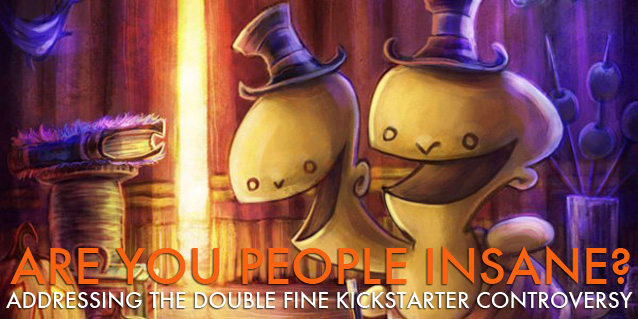 Are You People Insane? Addressing The Double Fine Kickstarter Controversy
Are You People Insane? Addressing The Double Fine Kickstarter Controversy